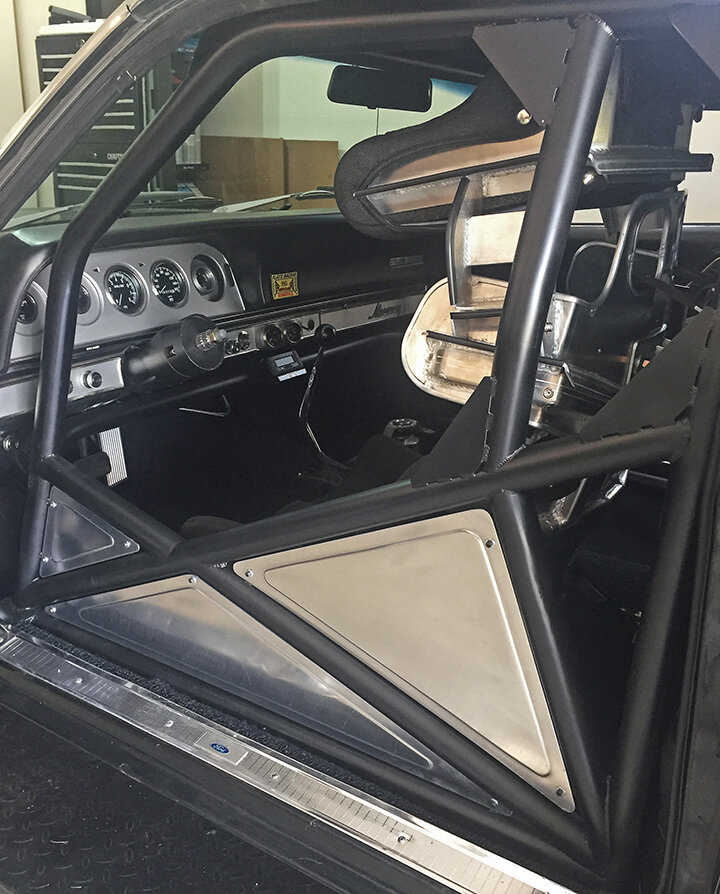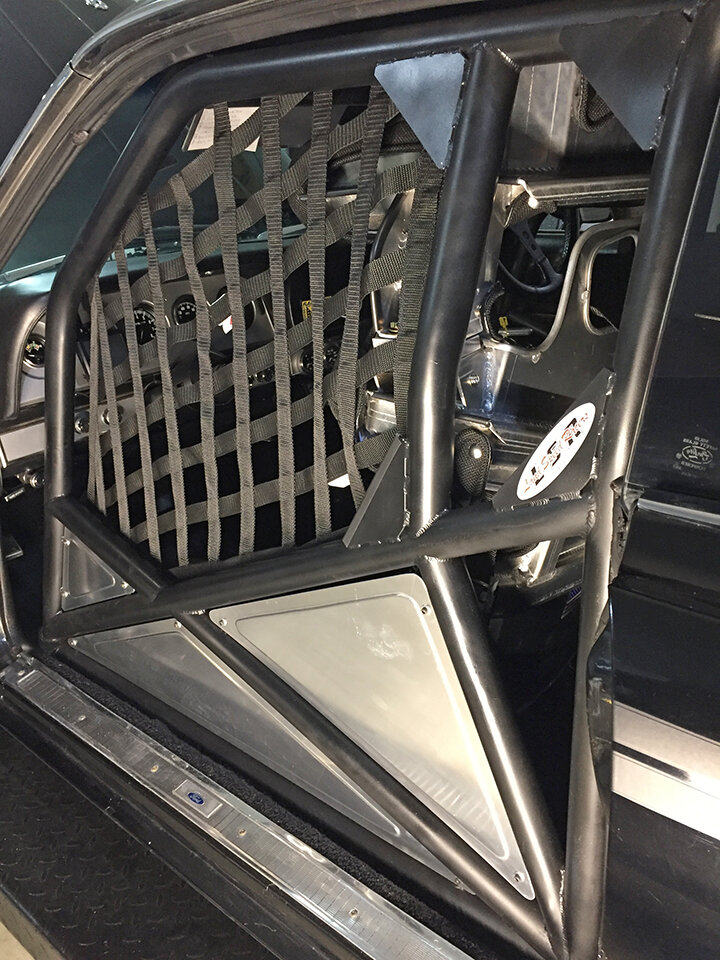Build Your Own Street Legal 200 MPH NASCAR Bonneville ’69 Mercury Cyclone Spoiler II
January 2021 • By Tony Thacker
Presented by MicksPaint.com & USAutomotive.co.ukAnything black stands out on the glistening white salt flats of Bonneville— especially if it’s not splattered with salt. So, when I saw Michael Callahan’s pristine, clean, coal black 1969 Mercury Cyclone Spoiler II I just had to check it out—I’d never seen one before.
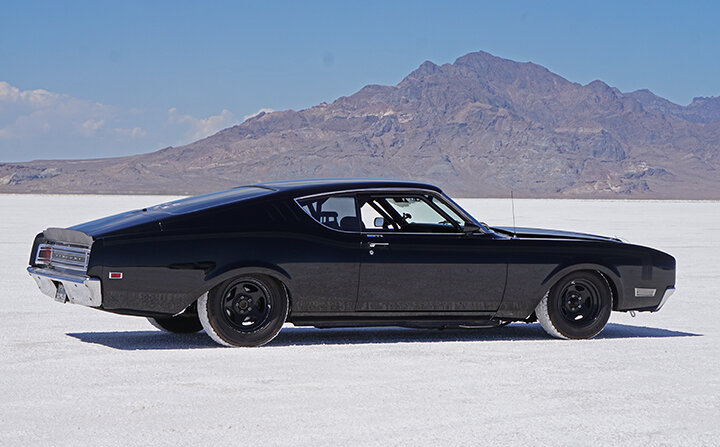
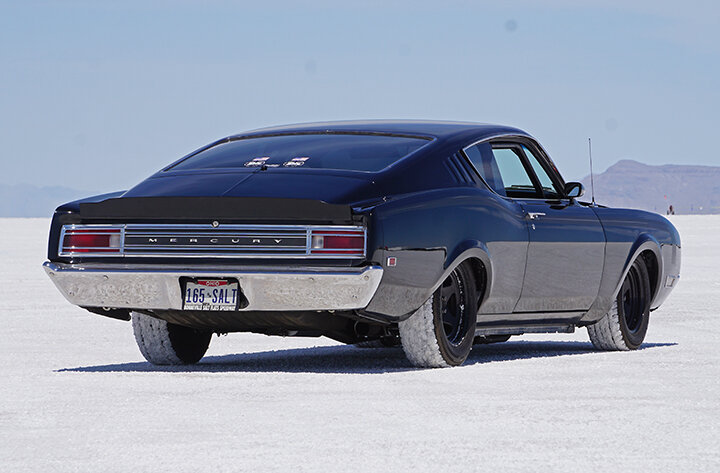
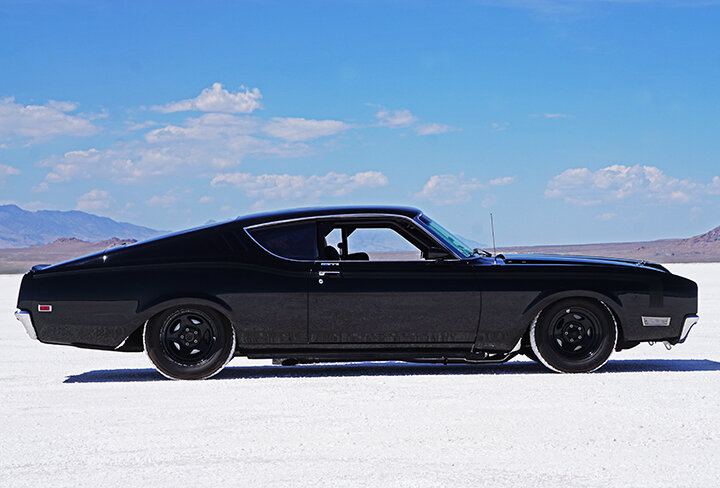
The one-year-only ’69 Mercury Cyclone Spoiler II was a special, slippery version of the Mercury Cyclone ‘Sportsroof’ that was Ford’s name for fastback. Only an estimated 502 were built specifically to make the Mercury more competitive in NASCAR racing, where 500 production models were needed for homologation. A Ford version was sold as the Torino Talladega.
Note the deeply inset grille of this1969 Mercury Cyclone GT SCJR 2-door hardtop. Photo courtesy Barrett-Jackson
Because the production Cyclones had an inset grille and headlights, which performed poorly in the wind tunnel, a sleeker front section that extended the car's length by about six inches was added. A flush-mounted grille from a Ford Cobra, identical to that used on the Torino Talladega, gave a more aerodynamic front end.
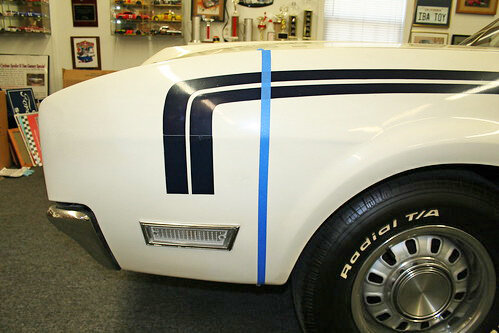

The front end was extended by 6 inches but as you can see it was a rudimentary modification. Photos courtesy TalladegaSpoilerRegistry.com
Further improving the frontal aero was a bumper, that was actually a rear ’69 Ford Fairlane bumper that was been sectioned, V'ed, and capped to create a crude air dam. The rocker panels were also, apparently, reshaped and rolled to allow Mercury teams to run their cars about an inch lower while staying within NASCAR rules; this also greatly enhanced top speed.
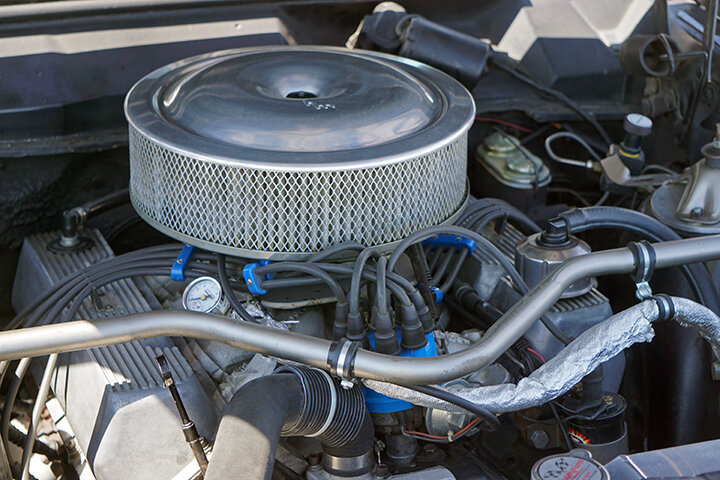

All Spoiler II production models were equipped with a 351ci Windsor, an automatic trans, and column shift. Race versions of the car were fitted with the Ford side-oiler FE 427—Ford's main racing engine since 1963. Later in the season, many of the teams switched to the Boss 429. When he found it in California, Michael’s car was equipped with ’70 351 Cleveland with 4bbl heads and a single 750 Holley. The trans is a 4-speed Top Loader. Out back is a Detroit Locker with a 2.75.
The factory offered only two trim packages: The Cale Yarborough Special, a white car with red interior, exterior trim and top, and the Dan Gurney Special: a white car with blue interior, trim and top. When found, Michael’s Gurney Special had been repainted black.
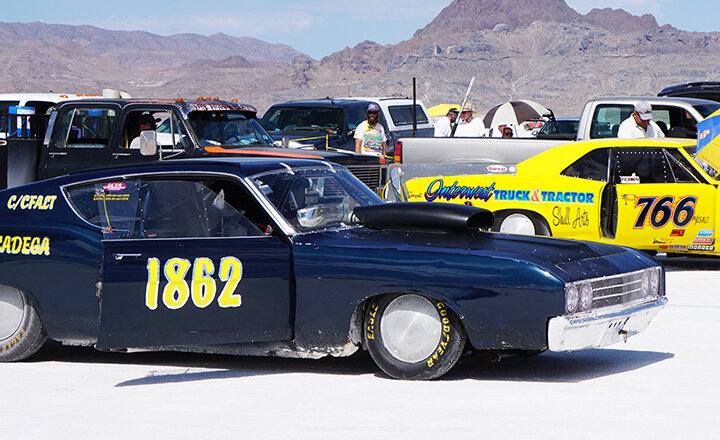
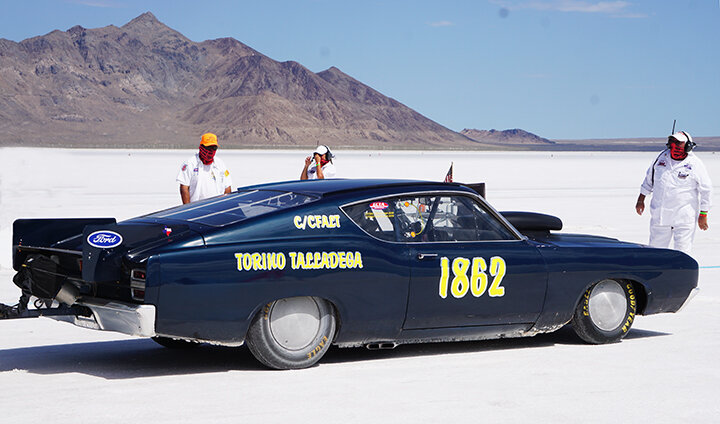
In 2020, Larry E. Wilson’s Torino Talladega ran 229.303mph at Bonneville
According to various sources the top speed of a street Cyclone was 149 mph, but Michael felt he could go faster at Bonneville. Now, while the SCTA requires a full cage in any race car the Utah Salt Flats Racing Association (USFRA) sanctioning body has both 130 MPH and 150 MPH Club classes for currently licensed and insured, street legal cars. There are rules (see links below) but they only require a 4-point roll bar approved by a recognized racing organization.
Mike regularly drives the 3,600-mile round trip from Cincinnati to Bonneville.
For his first trip to Bonneville Michael drove the 1800 miles from his home in Cincinnati in an ex-Bondurant Driving School 1999 Crown Victoria that had been set up by Roush with a 1999 Mustang Cobra drivetrain. He got the ‘Cobra Vic’ into the 130 MPH Club but felt it would never go 150. He then made the decision to switch to the Spoiler. To meet the minimal USFRA requirements he installed a 4-point cage, driveshaft loop, V-rated tires, 5-point harness, seat brace, etc.
To meet his 150+ goal, Michael addressed the engine and while Beehive valve springs and titanium retainers were installed the rotating assembly was left entirely stock—he even retained the mechanical fuel pump. An Edelbrock air-gap intake replaced the single-plane manifold and many minor changes were made to the Holley. An aluminum driveshaft replaced the heavy stocker and 16-inch rear wheels were added to improve the gearing.
On the first time out running on 100-octane gas purchased at Bonneville, Mike’s Spoiler hit 154 mph. That was followed by a back-up pass of 153mph, putting him into the 150MPH Club no problem. Incidentally, in this USFRA-only class you are not allowed to exceed 159.999 mph.
In 2018, Mike again drove his Mercury out to Bonneville. With the same drivetrain and minor changes, such as removing the side mirrors and wipers and running open exhaust and front drag tires he ran 165mph.
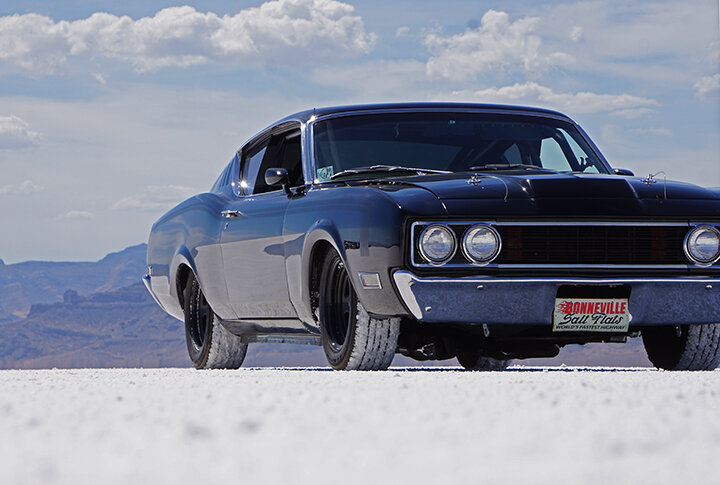
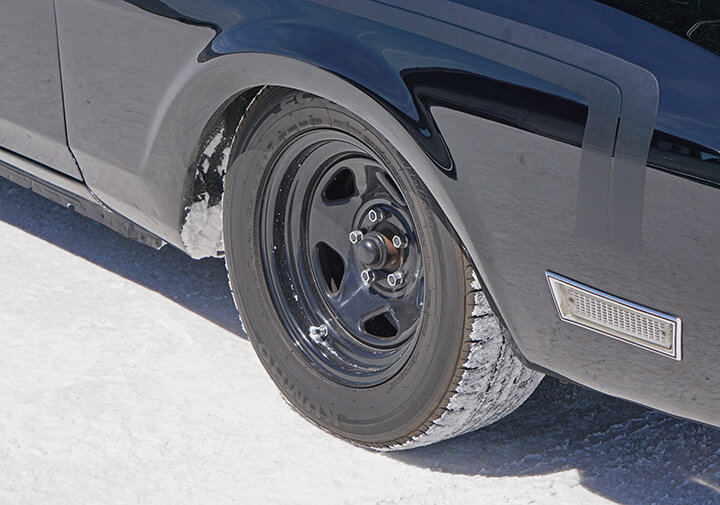

When we bumped into Michael, he was planning his next attempt. Unfortunately, exceeding 160 mph necessitates meeting the full SCTA safety requirement for roll cage, fire systems, etc. It’s a big but sensible step if he wants to go really fast—like 200 mph.
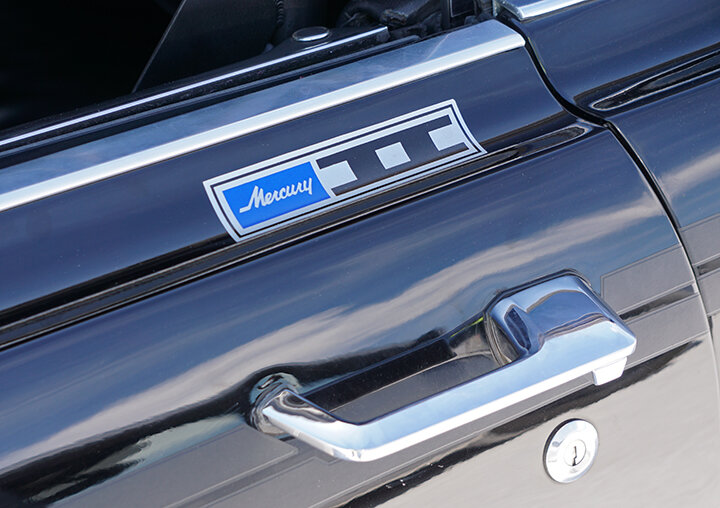
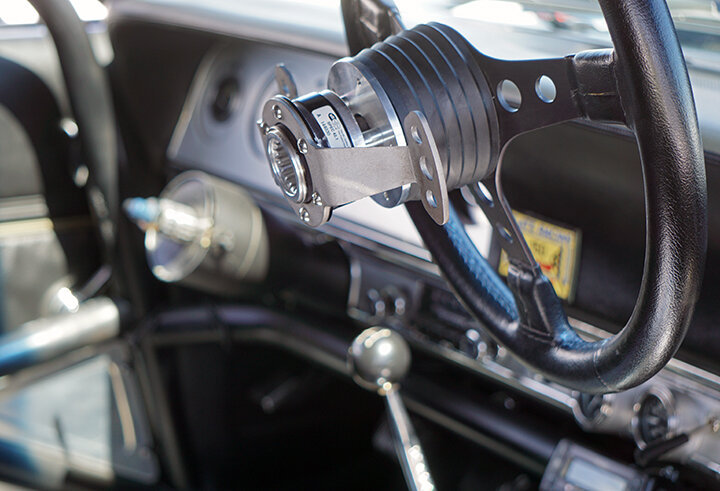
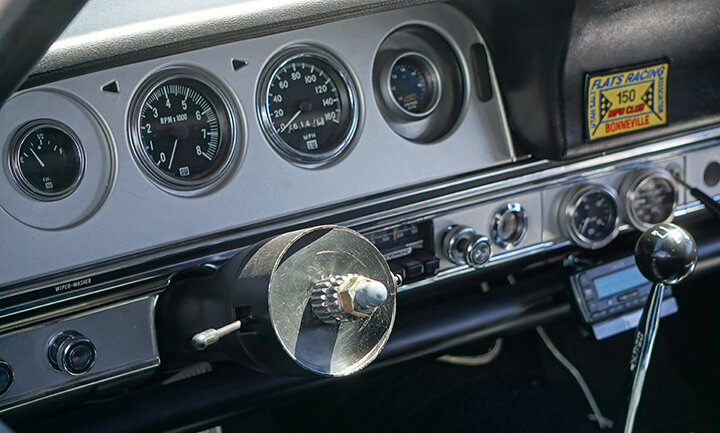

“Building a street legal car to go 200 at Bonneville is a challenge,” said Mike. “ I had the factory door glass duplicated in polycarbonate and bolted them in the tracks so that I can roll them up and down for the street. Then I added support braces so that when I race they won’t blow out.”
“I had a custom containment seat made with a bolt-on halo that I can remove so that I can see when street driving. I have a custom, bolt-in door net that can be added for racing. The roll cage was a real challenge because the rear seat and stock dash pad had to be removable. The cage and containment seat make it a little tight when getting in and out of the car but I’m getting used to it.”
“In August 2020, I drove the car out to Speed Week and had the SCTA-BNI tech guys look it over. This winter I plan to upgrade the fuel system and install a Tremec TKX trans and a fire suppression system. My plan is to drive out for the 2021 USFRA World of Speed event, hopefully pass tech so that I can license up and go fast. Then, next year, run the SCTA-BNI Speed Week.
“In the past I have driven on many Hot Rod Power Tours and Woodwood Dream Cruises. I was invited to the Muscle Car And Corvette Nationals in 2016 and 2019 and participated in the 2019 Aero Warrior Reunion at Talladega. I’ve been very fortunate to have some great fun with this car but nothing compares to Bonneville.”
You can visit www.TalladegaSpoilerRegistry.com to learn more about the history of these rare cars.
Vehicle: 1969 Mercury Cyclone Spoiler II Dan Gurney edition
Owner: Mike Callahan
• Top speed to date: 165 mph
• Engine: 1969 351 Cleveland with 4bbl heads
• Intake: Edelbrock air-gap
• Carb: 750 Holley
• Trans: 4-speed Top Loader
• Shifter: Hurst Comp Plus
• Driveshaft: Aluminum
• Rear axle: Detroit Locker with a 2.75
Interior
• Instruments: Stewart-Warner
• Seat: Ultra•Shield
• Steering wheel: Grant
• Wheels: Cragar 365 V-5 series
• Tires: Kumho 225/60R15 (front), Kuhmo 235/60R16 (rear)
USFRA 130 MPH Rules: https://saltflats.com/I30_Club2015.htm
USFRA 150 MPH Rules: https://saltflats.com/I50_Club2015.htm









